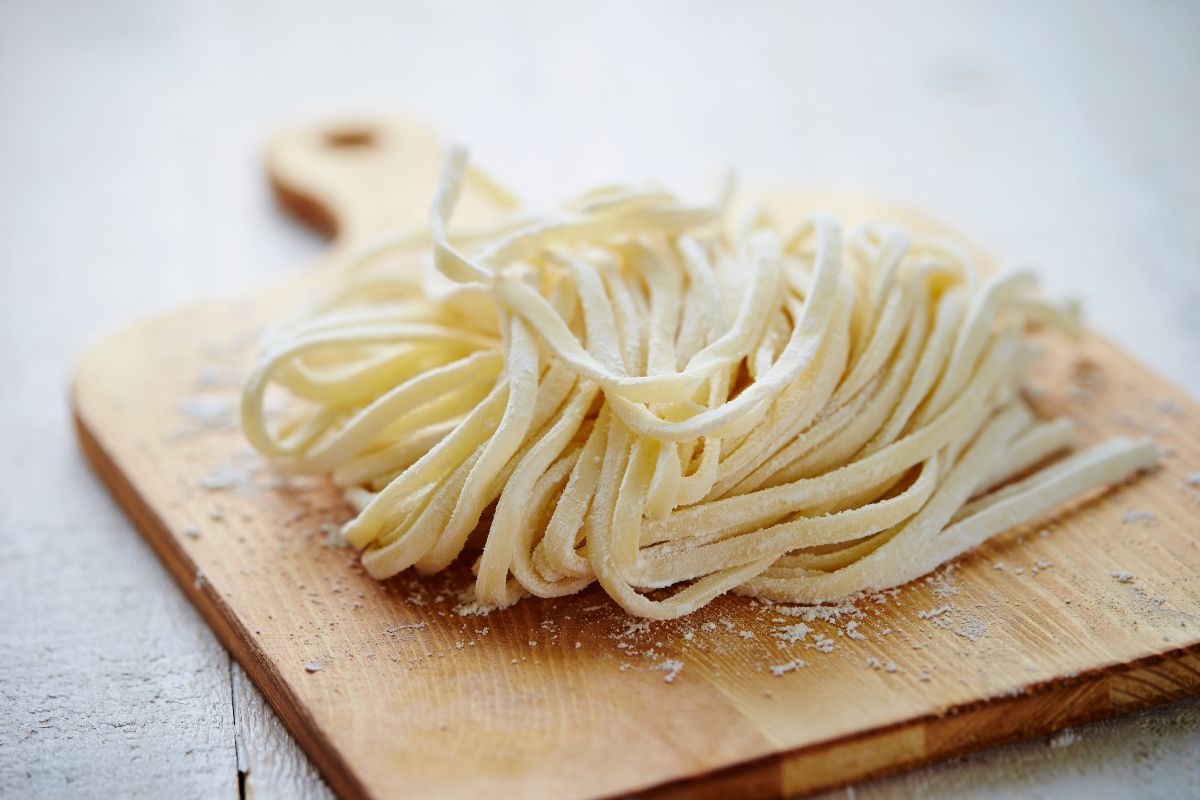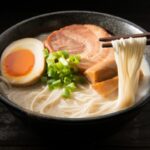One of the most exciting parts of Japan is the food. The second you walk off that plane, the first order of business will be finding a place to grab some authentic Japanese cuisine. You’ll have plenty of options to choose from; however, that pool of options can shrink just a little if you’re a practicing vegetarian.
As you wander the streets, you’ll quickly see (to no surprise) that Japanese food is all about fish and meat. This can leave vegetarians with a sinking feeling in their guts. Even rice and noodles, which are vegetarian-friendly, contain seafood somewhere in the dish. Don’t panic! Sticking to your vegetarian lifestyle is easier than you think in Japan.
Despite Japan’s focus on raw fish, vegetarians won’t have to search far for something to eat. Plenty of classic dishes are vegetarian, and many others can be made with vegetarian-friendly substitutes. Below, you’ll find a variety of vegetarian options, foods to avoid and tips for eating vegetarian in Japan.

Common Japanese foods
Japanese cuisine has several staples you’re bound to see at almost every restaurant. The island has ideal growing conditions for rice crops, which has led to many rice-based dishes like chahan, onigiri and donburi. You’ll also encounter many varieties of noodles with soba, udon, ramen and harusame being some of the most popular choices.
Since Japan is surrounded by water, the country boasts an impressive number of dishes featuring sea fare as the main ingredient. The nation catches everything from tuna to squid, making it a premier destination for fresh, locally-sourced seafood. Raw fish appears in many dishes, so vegetarians will have to be mindful of what they eat. Other types of meat like chicken, pork and beef are common in Japanese cuisine, as well.
With these staples in mind, let’s take a look at some of the most common dishes in Japan and how they stack up against a vegetarian lifestyle.
- Sushi: Sushi combines raw fish and sticky rice wrapped in seaweed. Inherently, this isn’t vegetarian-friendly; however, some restaurants might have vegetarian options that replace raw fish with vegetables. Vegetarian sushi has a growing place among Japanese restaurants seeking to broaden their menus.
- Miso soup: This is a very light soup containing tofu, green onions and sometimes other vegetables. The broth is made with miso paste (fermented soybeans) and fish stock. If you’re a strict vegetarian, you’ll want to avoid miso soup because of the fish stock. That said, there are some restaurants that make this broth with water or vegetable stock.
- Ramen: Ramen is a broth-based dish that combines noodles, green onions, seaweed and eggs. Sliced pork is common as well, although some varieties are made without it. Vegetarians can avoid meat-free ramen; however, those who practice veganism will want it sans-eggs.
- Tempura: The dish consists of seafood and vegetables fried in batter. Tempura dipping sauce is made with consommé, which usually contains beef broth. Vegetarians will want to avoid tempura altogether, unless it’s strictly billed as vegetarian on the menu.
- Yakitori: Yakitori is bite-sized pieces of chicken, pork or beef grilled on a skewer with vegetables. Some restaurants might be able to use tofu instead of meat, but it’s not typically common.
- Kare-raisu: This is a simple dish of rice, curry, meat and vegetables. Many varieties combine different ingredients, so it’s possible to order vegetarian kare-raisu in Japan. Again, vegetarian options are likely to be listed specifically on the menu.
Keep in mind that this is just a small sampling of Japan’s most popular foods. As you branch out to explore Japanese cuisine, you’re likely to find plenty of dishes that are either naturally vegetarian, or that lend themselves to a vegetarian lifestyle with a little alteration. Natto, anyone?
Is Japanese fast-food vegetarian?
The available food options will depend on which yatai you visit. Yatai are food stalls that commonly line the streets of Japan. They sell a lot of traditional Japanese fast-food dishes, many of which contain meat and fish. For instance, yakisoba contains pork in a base of wheat noodles. Ikayaki is grilled squid on a stick, and there’s nothing vegetarian about that!
But not all fast-food is made with meat and fish. Much like many other countries, Japan has some vegetarian options among their classic fast-food dishes. One of the most popular is yakiimo: a Japanese sweet potato baked over a wood fire. Vegetarians can also enjoy yaki tomorokoshi (grilled corn on the cob) that’s been coated with soy sauce. And of course, Japan has a variety of on-the-go sweet treats like candied fruit, wataame and imagawayaki.
What can vegetarians eat in Japan?
With the myriad of seafood dishes, it might be hard to believe vegetarians can fully enjoy an authentic Japanese culinary experience. But the truth is, some of Japan’s most classic dishes are naturally vegetarian (no substitutes necessary). Rice and vegetables are mixed with savory sauces to create dishes that are nothing like what you’d find back home.
For those who want a mouth-watering culinary experience without the fear of eating outside their vegetarian lifestyle, here’s a look at a few of the best dishes to explore first:
- Noodle dishes: Noodles are a staple in Japan, and varieties such as soba, udon and harusame are all vegetarian-friendly. Just make sure the broth they’re served in isn’t made from animal stock!
- Vegetable tempura: While this dish commonly includes seafood, you can order fried vegetables like asparagus, eggplant, mushrooms and lotus root. Keep in mind that not all tempura restaurants will offer this option.
- Inari-zushi: Vegetarians can swap sushi for inari-zushi, which is deep-fried tofu stuffed with sticky rice.
- Okonomiyaki: This dish offers vegetarian-friendly toppings that sit on a pancake made from cabbage or noodles.
- Ramen: Most ramen dishes can become vegetarian by omitting pork and requesting broth made without fish stock.
- Miso soup: Aside from the fish stock (which can be replaced), miso soup is naturally vegetarian with its tofu, green onions and fermented soybeans.
- Tsukemono: This is a simple, vegetarian-friendly dish of pickled produce like eggplant, plums and cucumbers.
- Kushikatsu: Vendors make vegetarian versions of kushikatsu, which is deep-fried vegetables on a stick that come with a savory dipping sauce.
A note about veganism
Veganism and vegetarianism are often lumped together; however, they have one key difference. Vegans also abstain from eating products created by animals, such as eggs, butter or cheese. If you’re a vegetarian who leans vegan or have embraced veganism wholly, there’s good news: Japan’s cuisine can easily accommodate you!
Often, eating vegan and eating vegetarian follow the same approach in Japan. There isn’t a lot of emphasis on animal-produced foods in Japanese culture. Rather, the Japanese prefer natural ingredients. That means lots of noodles and rice, with emphasis on avoiding broths made of animal stock. For example, eating a vegetable-based ramen without eggs or pork is a delicious meal that’s sure to satisfy!
A note for pescatarians
If you’re a pescatarian—a vegetarian who’s generally okay with eating fish—you won’t have to do much when it comes to moderating your food choices. As mentioned, fish is huge in Japanese culture, so you’ll be able to indulge in sushi, sashimi and fish-based broths. The only real foods you’ll need to make an effort to avoid are those that include beef or pork. Watch out for bone-based broths and the occasional sauce or garnish that involves animal fats.
Tips for eating vegetarian in Japan
There are a couple things to keep in mind if you plan to eat vegetarian in Japan. Be prepared to communicate your dietary needs to the staff at restaurants. You can request a dish with no meat by saying, “niku nashi.” Similarly, the phrase “sakana nashi” refers to dishes without seafood. These phrases can help the waiter point out vegetarian-friendly options on the menu.
Before ordering food, remember that fish products can easily hide in a dish. Japanese cuisine often uses an ingredient called dashi, which is a broth made from kelp seaweed and dried bonito flakes. Dashi is usually found in ramen and miso soup, and it’s added to other dishes to enhance the flavor. Some restaurants will also sprinkle dried bonito flakes on top of the dish. Ask if they offer non-fish-based dashi, and be sure they don’t top off your food with bonito flakes.
Explore Japanese cuisine with confidence
As a vegetarian, you’re probably used to evaluating a restaurant before going to eat there—after all, you want to make sure they have dishes you can enjoy with peace of mind. The key to eating vegetarian in Japan is to understand the cuisine and its origins, and to ask about potential substitutions where possible.
Don’t let the multitude of seafood dishes intimidate you. At first glance, it may seem like there’s no room for vegetarians in Japan. The opposite couldn’t be more true. Many classic Japanese dishes are naturally vegetarian, so you can get the full experience without compromising your dietary needs. Even the ones featuring meat and fish can easily become vegetarian-friendly. Vegetarians will never go hungry in Japan!
Japanese cuisine has several staples you’re bound to see at almost every restaurant. The island has ideal growing conditions for rice crops, which has led to many rice-based dishes like chahan, onigiri and donburi. You’ll also encounter many varieties of noodles with soba, udon, ramen and harusame being some of the most popular choices.
Since Japan is surrounded by water, the country boasts an impressive number of dishes featuring sea fare as the main ingredient. The nation catches everything from tuna to squid, making it a premier destination for fresh, locally-sourced seafood. Raw fish appears in many dishes, so vegetarians will have to be mindful of what they eat. Other types of meat like chicken, pork and beef are common in Japanese cuisine as well.
Here’s a taste of the most common dishes in Japan:
- Sushi: Sushi combines raw fish and sticky rice wrapped in seaweed. Some restaurants might have vegetarian options that replace raw fish with vegetables.
- Miso soup: This is a very light soup containing tofu, green onions and sometimes other vegetables. The broth is made with miso paste (fermented soybeans) and fish stock.
- Ramen: Ramen is a broth-based dish that combines noodles, green onions, seaweed and eggs. Sliced pork is common as well, although some varieties are made without it.
- Tempura: The dish consists of seafood and vegetables fried in batter. Tempura dipping sauce is made with consommé, which usually contains beef broth.
- Yakitori: Yakitori is bite-sized pieces of chicken, pork or beef grilled on a skewer with vegetables. Some restaurants might be able to use tofu instead of meat.
- Kare-raisu: This is a simple dish of rice, curry, meat and vegetables. Many varieties combine different ingredients, so it’s possible to order vegetarian kare-raisu in Japan.
Is Japanese fast-food vegetarian?
The available food options will depend on which yatai you visit. Yatai are food stalls that commonly line the streets of Japan. They sell a lot of traditional Japanese fast-food dishes, many of which contain meat and fish. For instance, yakisoba contains pork in a base of wheat noodles. Ikayaki is grilled squid on a stick, and there’s nothing vegetarian about that!
But not all fast-food is made with meat and fish. Much like many other countries, Japan has some vegetarian options among their classic fast-food dishes. One of the most popular is yakiimo, a Japanese sweet potato baked over a wood fire. Vegetarians can also enjoy yaki tomorokoshi (grilled corn on the cob) that’s been coated with soy sauce. And of course, Japan has a variety of on-the-go sweet treats like candied fruit, wataame and imagawayaki.
What can vegetarians eat in Japan?
With the myriad of seafood dishes, it might be hard to believe vegetarians can fully enjoy an authentic Japanese culinary experience. But the truth is, some of Japan’s most classic dishes are naturally vegetarian (no substitutes necessary). Rice and vegetables are mixed with savory sauces to create dishes that are nothing like what you’d find back home.
Here’s what vegetarians can eat in Japan:
- Noodle dishes: Noodles are a staple in Japan, and varieties such as soba, udon and harusame are all vegetarian-friendly.
- Vegetable tempura: While this dish commonly includes seafood, you can order fried vegetables like asparagus, eggplant, mushrooms and lotus root.
- Inari-zushi: Vegetarians can swap sushi for inari-zushi, which is deep-fried tofu stuffed with sticky rice.
- Okonomiyaki: This dish offers vegetarian-friendly toppings that sit on a pancake made from cabbage or noodles.
- Ramen: Most ramen dishes can become vegetarian by omitting pork and requesting broth made without fish stock.
- Miso soup: Aside from the fish stock (which can be replaced), miso soup is naturally vegetarian with its tofu, green onions and fermented soybeans.
- Tsukemono: This is a simple, vegetarian-friendly dish of pickled produce like eggplant, plums and cucumbers.
- Kushikatsu: Vendors make vegetarian versions of kushikatsu, which is deep-fried vegetables on a stick that come with a savory dipping sauce.
Tips for eating vegetarian in Japan
There are a couple things to keep in mind if you plan to eat vegetarian in Japan. Be prepared to communicate your dietary needs to the staff at restaurants. You can request a dish with no meat by saying, “niku nashi.” Similarly, the phrase “sakana nashi” refers to dishes without seafood. These phrases can help the waiter point out vegetarian-friendly options on the menu.
Before ordering food, remember that fish products can easily hide in a dish. Japanese cuisine often uses an ingredient called dashi, which is a broth made from kelp seaweed and dried bonito flakes. Dashi is usually found in ramen and miso soup, and it’s added to other dishes to enhance the flavor. Some restaurants will also sprinkle dried bonito flakes on top of the dish. Ask if they offer non fish-based dashi, and be sure they don’t top off your food with bonito flakes.
Don’t let the multitude of seafood dishes intimidate you. At first glance, it may seem like there’s no room for vegetarians in Japan. The opposite couldn’t be more true. Many classic Japanese dishes are naturally vegetarian, so you can get the full experience without compromising your dietary needs. Even the ones featuring meat and fish can easily become vegetarian-friendly. Vegetarians will never go hungry in Japan!
- How Much Money Can You Make Teaching English in Japan? - December 12, 2022
- The Best Places to Teach English in Japan - December 9, 2022
- The Best Credentials for Teaching English in Japan - December 8, 2022

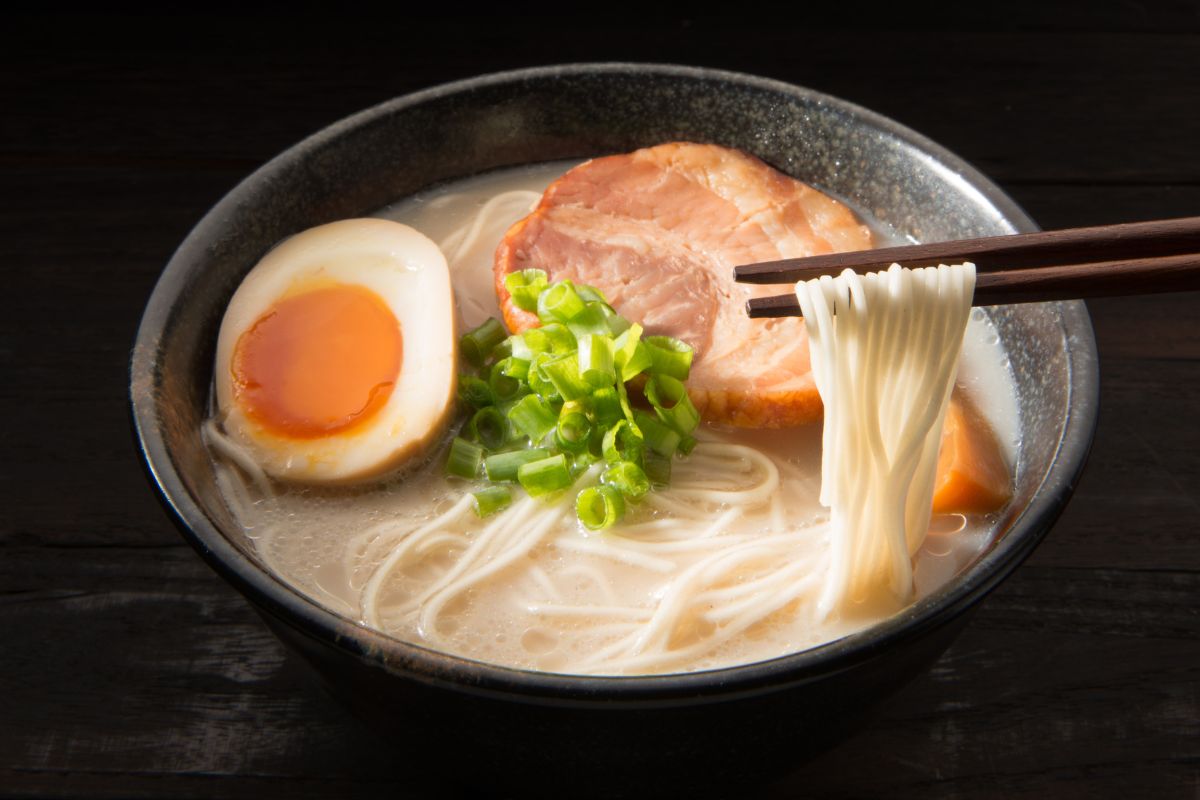

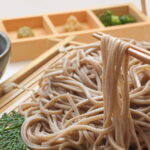
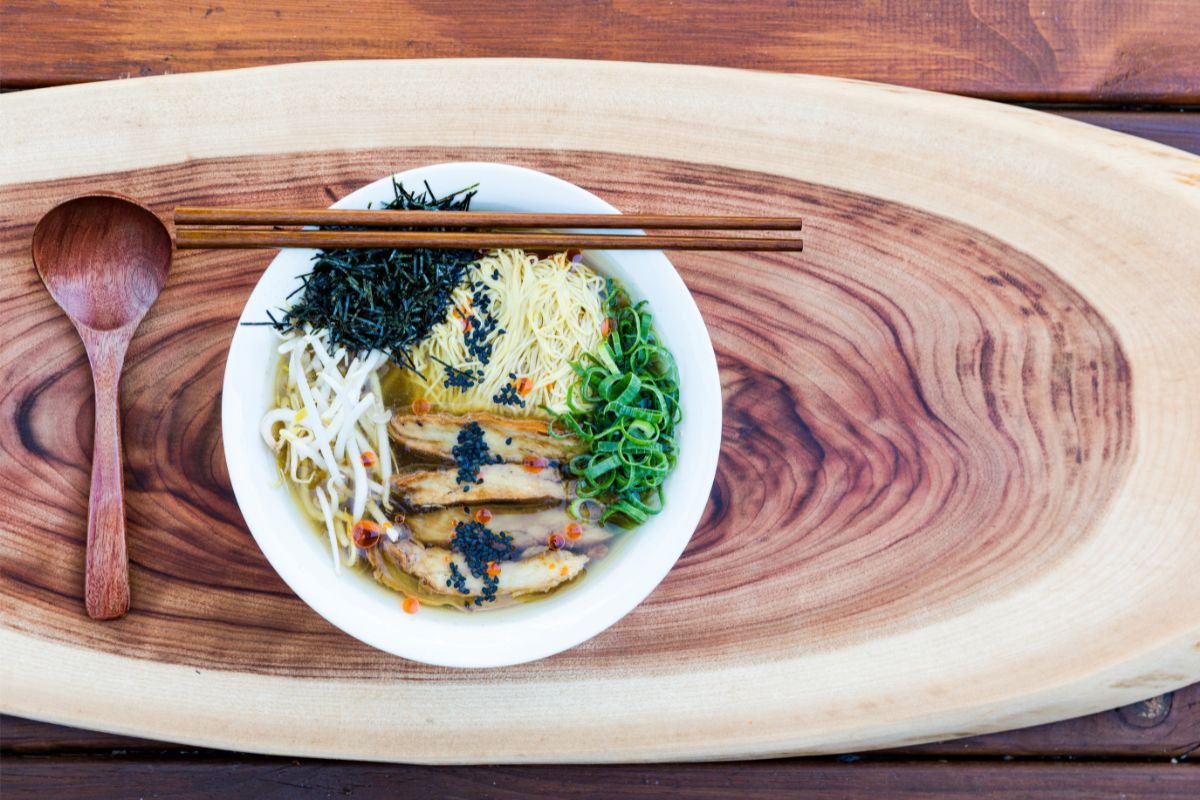
![What Sushi Has No Fish? [Vegetarian Sushi Explained] What Sushi Has No Fish? [Vegetarian Sushi Explained]](https://justaboutjapan.com/wp-content/uploads/2023/03/What-Sushi-Has-No-Fish-Vegetarian-Sushi-Explained-150x150.jpg)

